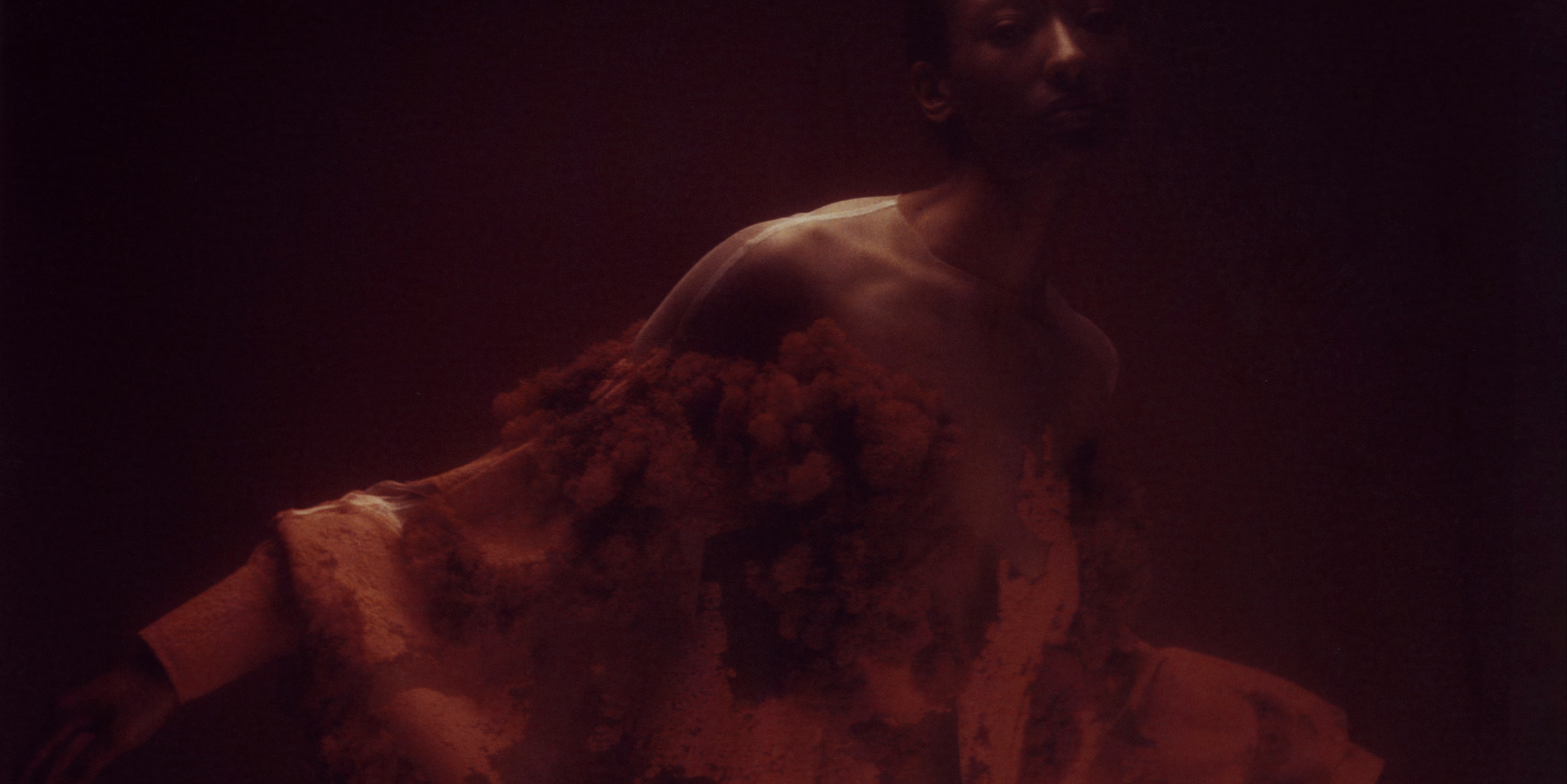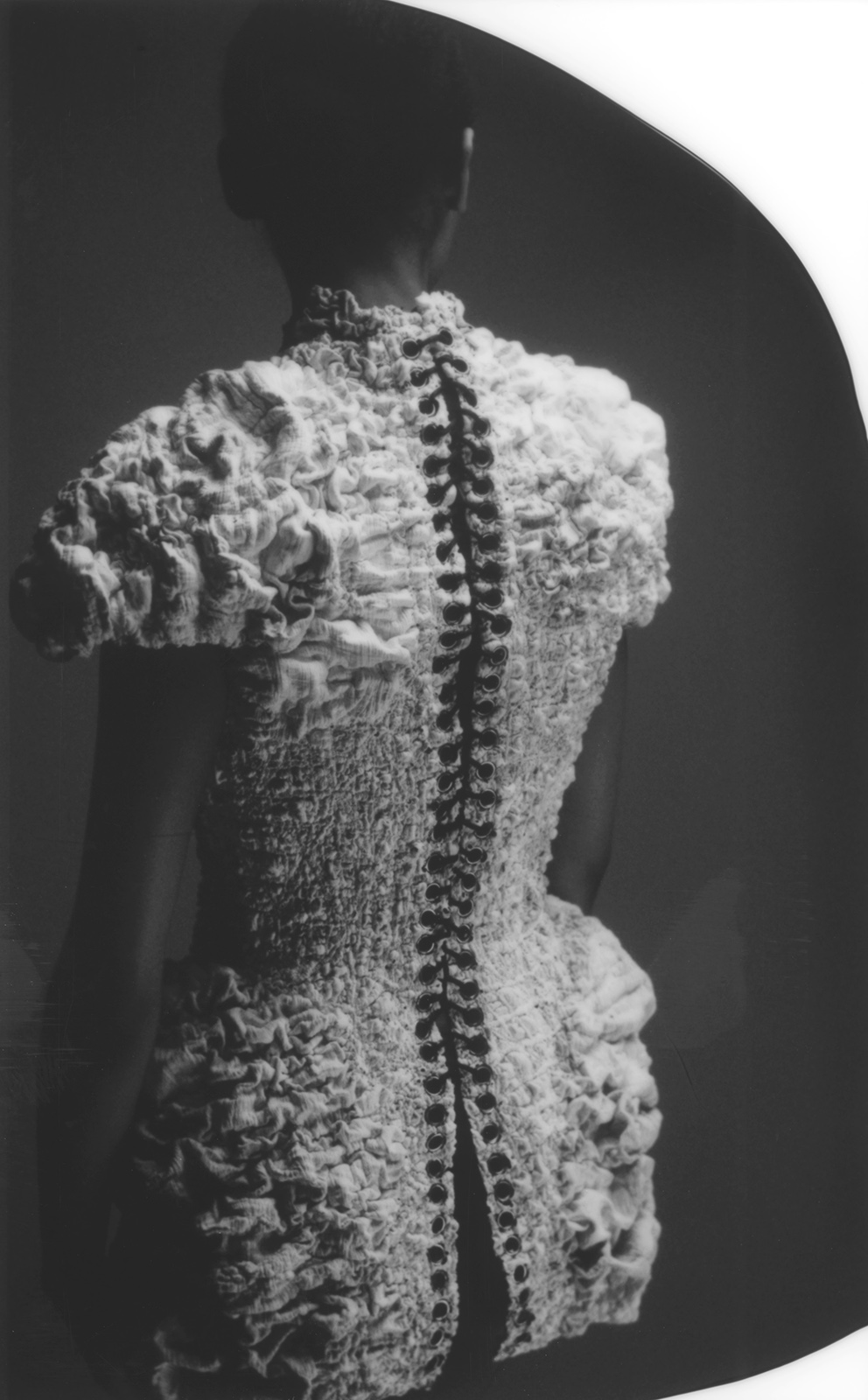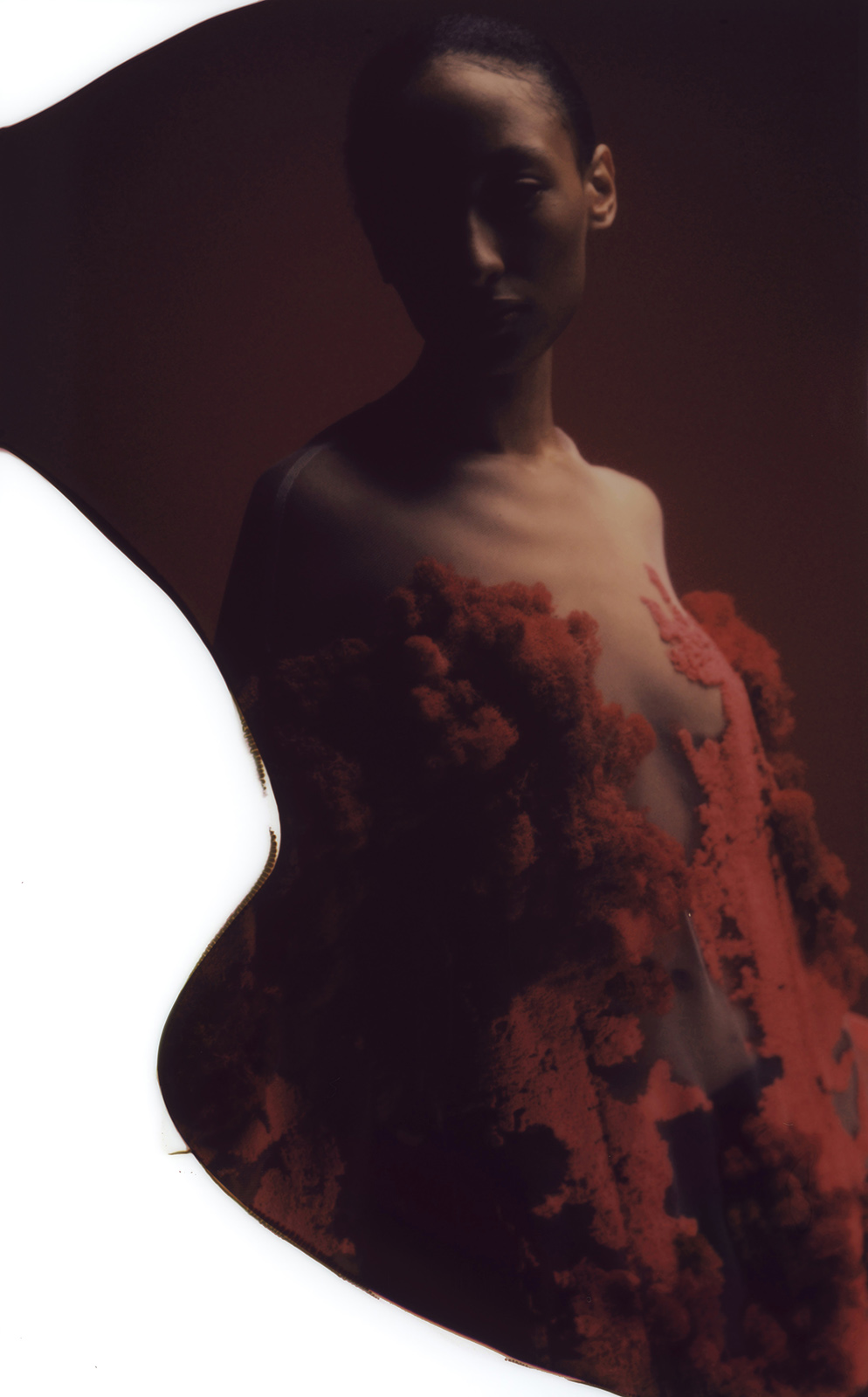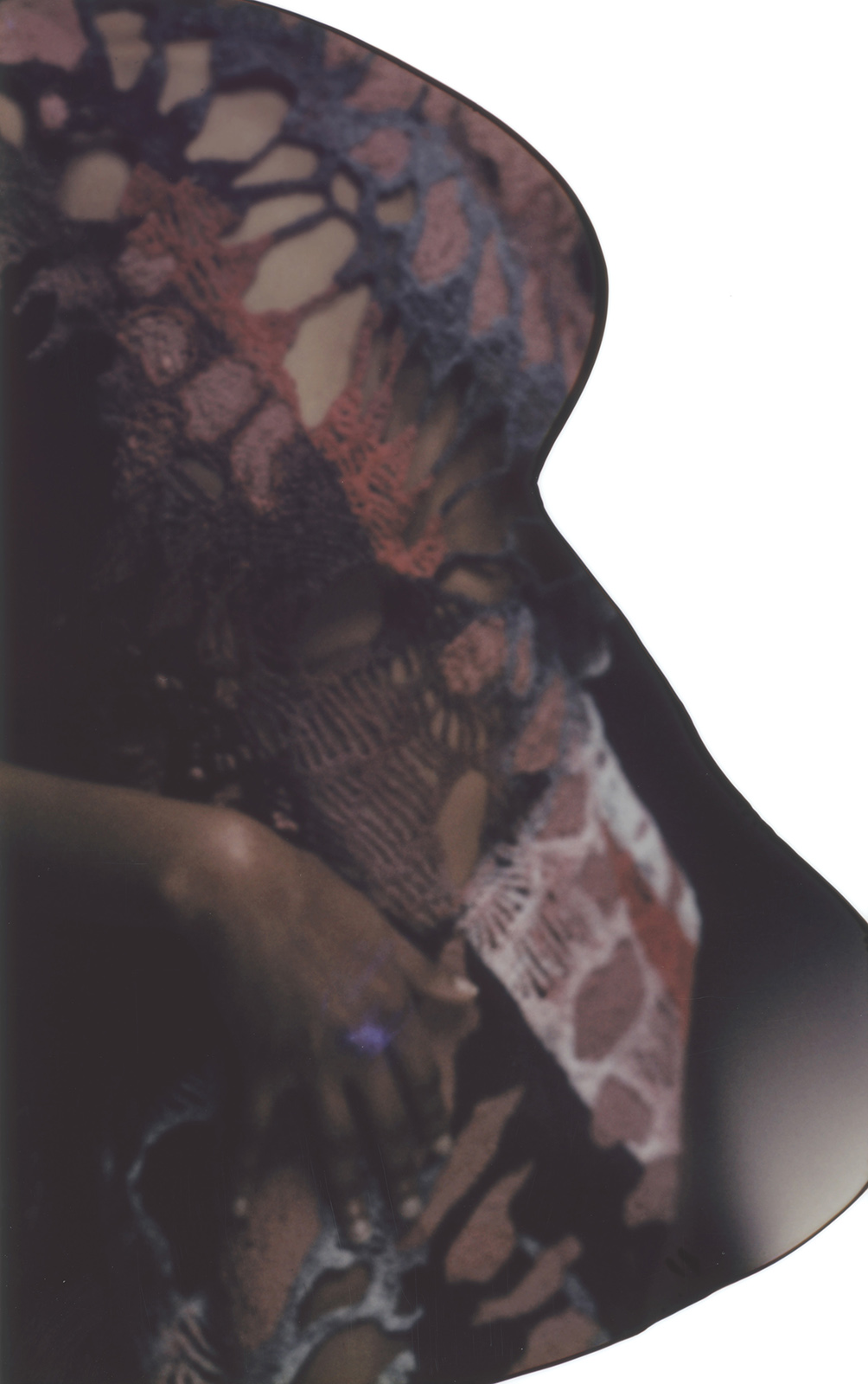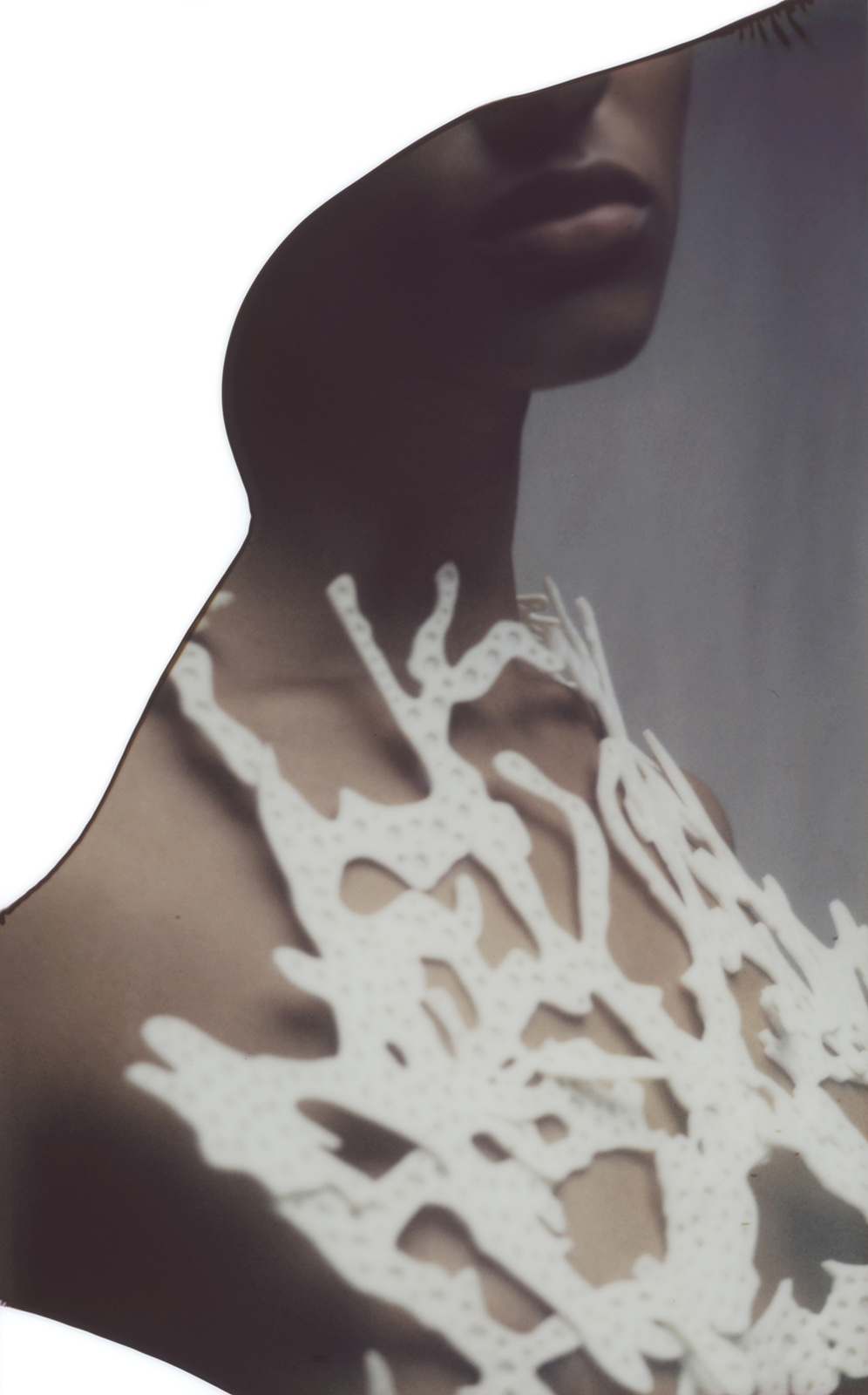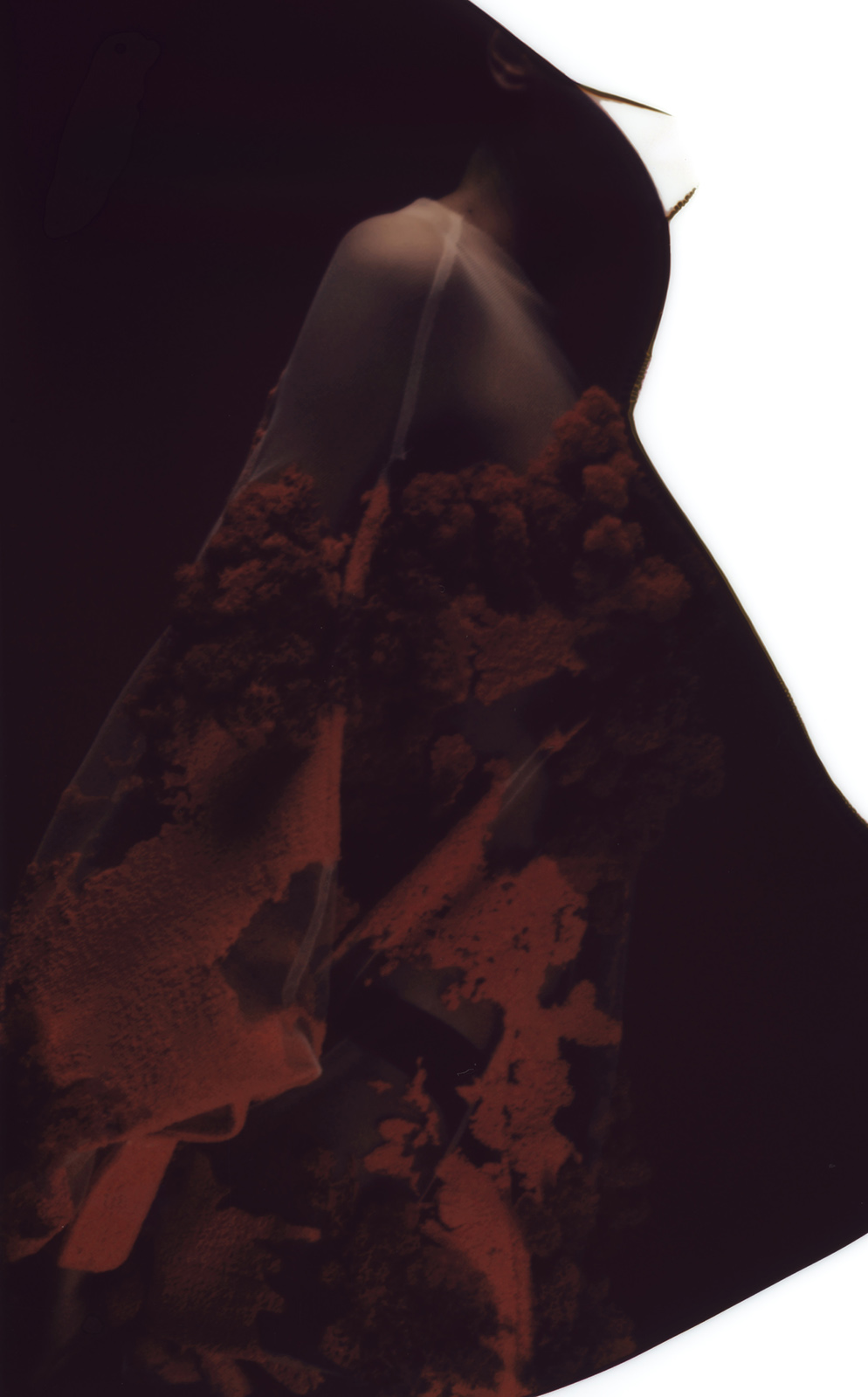The designer employs biotechnology and 3D printing on his path to a radically sustainable future for the fashion industry
Piero D’Angelo has one foot in the metaverse, and another in the green, grassy natural world. It may seem contradictory—like he’s playing both sides in the ‘old school reality’ versus ‘virtual reality’ debate. But it’s not, really, for a designer bent simply on finding the right path to a radically sustainable future for his industry.
“I’m a great observer,” D’Angelo says. “I tend to get inspired by things that I haven’t come across before.” He grew up in Colledimezzo: a small, picturesque town in Italy’s Abruzzo hills. There, the designer found a love for organic exploration and discovery. A love for science soon followed, existing rather instinctively on the other side of that coin: “It provides an answer, most of the time, to what was once unknown.”
What’s emerged is a label that’s not really the antithesis of fast fashion—it’s one of the furthest things from it, though, existing on a separate plane entirely. Piero D’Angelo makes garments that are grown; they live and die, like a houseplant. The pieces’ structures are 3D printed—D’Angelo calls them “the bones”—then lichens and mosses are cultivated and controlled, to act in lieu of traditional textiles.
Recently, D’Angelo began selling garments and accessories on Decentraland—a three-dimensional virtual world where users can buy real estate and other products as NFTs. The project is in collaboration with DressX, a shopping platform focused on digital clothing, which can be donned by avatars or superimposed—quite realistically—onto photos of one’s real-world self. “We strongly believe that the amount of clothing produced today is way greater than humanity needs,” reads the company’s vision statement. “Don’t shop less, shop digital fashion.”
These technologies may take some getting used to, at least for the mainstream public. But D’Angelo is cautiously optimistic, and eager to keep experimenting. “Time and patience are the key,” he says. “ I never consider my pieces to be ‘final,’ but rather fragments of my overall journey through design and sustainability.”
Morgan Becker: What are the roots of your passion for design—both generally, and as it pertains to the field of textiles?
Piero D’Angelo: For me, design is a very powerful medium that allows you to express an idea in a tangible form. Through it, I can [communicate] who I am and what my passions are.
I like merging different concepts together—like my fascination with science and technology into contrasting contexts, such as fashion and textile. I enjoy researching unexplored fields: the discovery process, and surprising myself along the way. The element of surprise quite often comes from a mistake or failure. I cherish those aspects, because they can become an integral part of the process—influencing not only the designs, but the whole project’s topic, too.
Morgan: Where did you first learn about biotechnology, and did you immediately imagine its applications to the fashion industry?
Piero: While I was studying fashion at the Royal College of Art, I had a chance to learn more about biotechnology and biodesign. It came with its challenges at first, but I was very determined to learn more.
Unfortunately, there isn’t a fixed method yet on how you can successfully mix contrasting disciplines such as science and fashion, so research and experimenting in both areas was very important in order to unveil its potential.
Morgan: Could you give me a crash-course description on how the technologies you employ actually work?
Piero: Each project has a very bespoke process. It’s never one single technique, but rather a series of approaches from growing and experimenting with living organisms, to textile techniques such as embroidery and even 3D printing. For example, in my project with Slime Mould, I was fascinated by its intelligence and ability to detect a food source. I created a 3D printed garment that would have acted as the bones for this living organism and helped harvest it. When the food source is placed on every hole along the 3D printed piece, the Slime Mould would cover it entirely, creating a network between each of them. This organism can be used in different contexts, too—for instance, to dye fibers such as silk or cotton without deplenishing natural resources, or to be implemented into tech products as a self-repairing wire.
The idea is that every single approach would inform the other. It’s about keeping an open mind and not being afraid to try, make mistakes, and fail, since those are extremely important aspects of the process. I like to understand how a living organism and its life cycle works—to get inspired by it, and if necessary, to prototype and recreate the growth process through textile and unconventional techniques. I never considered my prototypes as final pieces, but as ready for new developments instead. Some time ago, I came across a quote from a great guy called Galileo Galilei, who said, ‘Measure what can be measured, and make measurable what cannot be measured.’ I’ve tried to apply it to my design philosophy since then.
Morgan: What are the reasons to use these techniques rather than traditional fabrics and processes?
Piero: I always thought that innovation should be what drives fashion forward, and biotechnology alongside a multidisciplinary approach could help create new, intelligent, and more sustainable materials. I envision fabrics that could behave differently from what we know—act as a filter for pollutants, for example, or even cure us from illness. From an aesthetic point of view, making those materials could reinvent old textile techniques, invent some others, and even inspire different silhouettes.
Morgan: Would you predict that these technologies will become mainstream in the field of fashion? Are they, or could they be, functional for everyday wear?
Piero: Most of the time, I find myself experimenting with materials that are not ‘materials’ yet, or that at least do not fulfill our general idea of wearability. This does not mean that they won’t be [wearable] in the future, but time and patience are the key. This is also why I never consider my pieces to be ‘final,’ but rather fragments of my overall journey through design and sustainability.
Morgan: How long could a completely natural garment last, considering that you need to care for it like a plant?
Piero: It’s hard to tell, because it is an experiment, but if the garment is very well looked after and kept away from heat sources as much as possible it can last for a very long time.
Morgan: Could you see your technologies being applied to fields other than fashion? Are you interested in expanding beyond fashion yourself?
Piero: I can definitely see my work applied to different contexts. I like to keep my mind open, and not necessarily think of a fashion collection as my final outcome. We live in a world that is more and more hybridized, where disciplines such as science, digital technologies, and arts are communicating and merging with each other.
Morgan: Could you tell me about some of your influences?
Piero: I grew up admiring the work of John Galliano and Alexander McQueen, and this is probably why I think of fashion not just as a way to make clothes, but also to create stories and innovate. Today, I find really inspiring the work of designers such as Neri Oxman and Suzanne Lee. I love their multidisciplinary approach, and exploration of materials, and attention to sustainability. For me, they represent the future of design.
Morgan: Who do you envision to be the person you’re designing for?
Piero: I have lots of muses in my life, starting from my mother. I suppose I took my sense of fashion from her, and I love getting into her photo albums to see the evolutions of her looks and style through time. My designs can be quite unique, and I like women who are not afraid to dare and have fun with it. Personally, I admire Lady Gaga, Daphne Guinness, and Björk. I find inspiring the way they embrace fashion—they’re chameleons, and own everything they wear.
Morgan: Could you tell me about your collaboration with DressX?
Piero: The Wabi Venus Project has been developed in collaboration with DressX, an online digital fashion platform whose mantra is to Produce less and more sustainably—a view in line with my philosophy, which is why I was very excited to get involved with it.
Although the purchase of the fashion pieces will be possible in the metaverse only, they can be worn both in digital reality, through the DressX app, and in the physical world. The name Wabi comes from wabi-sabi, a traditional Japanese philosophy based on the acceptance of imperfection. Sometimes we forget that nature is imperfect, and my aim in this work was to cherish that aspect. The Wabi Venus dress and necklace are also inspired by my obsession with lichens, and I wanted them to be a symbol of rebirth: the rebirth of a stronger woman. A woman that—like the goddess Venus emerging from the Mediterranean sea—embraces nature in its entirety, with an appreciation for its imperfect beauty. The physical pieces will be made to measure using a preserved species of lichens.
Morgan: What drew you to Decentraland and the metaverse in the first place?
Piero: I love working with innovative people, and even though the idea of the metaverse is still quite new to me, I’ve chosen to approach this project with an open mind. I’m very curious about the potential of digital fashion, and I wanted to explore the ways—probably not too far ahead in time—we will create, produce and consume fashion.
Although it may be still early to understand the full potential of digital fashion, [the metaverse] is giving us a glimpse of its possible directions. It would be very interesting to understand how this new media could evolve further in the future.
Morgan: What do you hope for, for the future of your career and label? For the fashion industry as a whole?
Piero: Through my brand, I’m envisioning a future where biotechnology could play a primary role in fashion—influencing not only its aesthetic, but also the way we create garments. Where new techniques, materials, and even silhouettes could be shaped with the help of this rising science.
I’m at the very beginning of my journey, and I hope to carry on with the same spirit of adventure and keep surprising myself at the end of every project. Collaborations have always been at the heart of my work and I would love to do more of them in the future. I hope to collaborate with artists and creatives across different fields, and keep pushing further the boundaries of what is possible to achieve in design and fashion.Nature always offered me a lot of inspiration, while curiosity, patience, and a sense of observation have been the main ingredients of my processes. I wish to inspire other people and designers to do the same: listen to nature, get influenced by it, and most importantly, create outcomes that won’t hurt our environment.
Model Kitan Sogo at IMG. Make-up Kite. Photo Assistant Kirsty Hunter. Casting Abi Colbert.


